项目代码
- #include <Arduino.h>
- #include <WiFi.h>
- #include <WiFiClient.h>
- #include <ArduinoOTA.h>
- #include <Wire.h>
- #include "MPU6050.h"
- #include <stdio.h>
- #include "esp_types.h"
- #include "soc/timer_group_struct.h"
- #include "driver/periph_ctrl.h"
- #include "driver/timer.h"
- #include "driver/ledc.h"
- #include "defines.h"
- #include "globals.h"
- #include "Motors.h"
- #include "Control.h"
- #include <WiFiUdp.h>
- #include "OSC.h"
- #include "esp32-hal-ledc.h"
-
- void initTimers();
-
- void initWifiAP() {
- //Serial.println("Setting up WiFi AP...");
- if (WiFi.softAP("bbot", "12345678")) {
- Serial.println("Wifi AP set up successfully");
- }
- WiFi.softAPConfig(IPAddress(192, 168, 4, 1), IPAddress(192, 168, 4, 1),
- IPAddress(255, 255, 255, 0));
- }
-
- void initMPU6050() {
- MPU6050_setup();
- delay(500);
- MPU6050_calibrate();
- }
-
- void setup() {
- pinMode(PIN_ENABLE_MOTORS, OUTPUT);
- digitalWrite(PIN_ENABLE_MOTORS, HIGH);
-
- pinMode(PIN_MOTOR1_DIR, OUTPUT);
- pinMode(PIN_MOTOR1_STEP, OUTPUT);
- pinMode(PIN_MOTOR2_DIR, OUTPUT);
- pinMode(PIN_MOTOR2_STEP, OUTPUT);
-
- pinMode(PIN_SERVO, OUTPUT);
-
- ledcSetup(6, 50, 16); // channel 6, 50 Hz, 16-bit width
- ledcAttachPin(PIN_SERVO, 6); // GPIO 22 assigned to channel 1
- delay(50);
- ledcWrite(6, SERVO_AUX_NEUTRO);
-
- Serial.begin(115200);
-
- Wire.begin();
-
- initWifiAP();
-
- initMPU6050();
- initTimers();
-
- OSC_init();
-
- digitalWrite(PIN_ENABLE_MOTORS, LOW);
- for (uint8_t k = 0; k < 5; k++) {
- setMotorSpeedM1(5);
- setMotorSpeedM2(5);
- ledcWrite(6, SERVO_AUX_NEUTRO + 250);
- delay(200);
- setMotorSpeedM1(-5);
- setMotorSpeedM2(-5);
- ledcWrite(6, SERVO_AUX_NEUTRO - 250);
- delay(200);
- }
- ledcWrite(6, SERVO_AUX_NEUTRO);
-
- digitalWrite(PIN_ENABLE_MOTORS, HIGH);
- }
-
- void processOSCMsg() {
- if (OSCpage == 1) {
- if (modifing_control_parameters) // We came from the settings screen
- {
- OSCfader[0] = 0.5; // default neutral values
- OSCfader[1] = 0.5;
- OSCtoggle[0] = 0; // Normal mode
- mode = 0;
- modifing_control_parameters = false;
- }
-
- if (OSCmove_mode) {
- //Serial.print("M ");
- //Serial.print(OSCmove_speed);
- //Serial.print(" ");
- //Serial.print(OSCmove_steps1);
- //Serial.print(",");
- //Serial.println(OSCmove_steps2);
- positionControlMode = true;
- OSCmove_mode = false;
- target_steps1 = steps1 + OSCmove_steps1;
- target_steps2 = steps2 + OSCmove_steps2;
- } else {
- positionControlMode = false;
- throttle = (OSCfader[0] - 0.5) * max_throttle;
- // We add some exponential on steering to smooth the center band
- steering = OSCfader[1] - 0.5;
- if (steering > 0)
- steering = (steering * steering + 0.5 * steering)
- * max_steering;
- else
- steering = (-steering * steering + 0.5 * steering)
- * max_steering;
- }
-
- if ((mode == 0) && (OSCtoggle[0])) {
- // Change to PRO mode
- max_throttle = MAX_THROTTLE_PRO;
- max_steering = MAX_STEERING_PRO;
- max_target_angle = MAX_TARGET_ANGLE_PRO;
- mode = 1;
- }
- if ((mode == 1) && (OSCtoggle[0] == 0)) {
- // Change to NORMAL mode
- max_throttle = MAX_THROTTLE;
- max_steering = MAX_STEERING;
- max_target_angle = MAX_TARGET_ANGLE;
- mode = 0;
- }
- } else if (OSCpage == 2) { // OSC page 2
- if (!modifing_control_parameters) {
- for (uint8_t i = 0; i < 4; i++)
- OSCfader[i] = 0.5;
- OSCtoggle[0] = 0;
-
- modifing_control_parameters = true;
- OSC_MsgSend("$P2", 4);
- }
- // User could adjust KP, KD, KP_THROTTLE and KI_THROTTLE (fadder1,2,3,4)
- // Now we need to adjust all the parameters all the times because we dont know what parameter has been moved
- Kp_user = KP * 2 * OSCfader[0];
- Kd_user = KD * 2 * OSCfader[1];
- Kp_thr_user = KP_THROTTLE * 2 * OSCfader[2];
- Ki_thr_user = KI_THROTTLE * 2 * OSCfader[3];
- // Send a special telemetry message with the new parameters
- char auxS[50];
- sprintf(auxS, "$tP,%d,%d,%d,%d", int(Kp_user * 1000),
- int(Kd_user * 1000), int(Kp_thr_user * 1000),
- int(Ki_thr_user * 1000));
- OSC_MsgSend(auxS, 50);
-
- #if DEBUG>0
- Serial.print("Par: ");
- Serial.print(Kp_user);
- Serial.print(" ");
- Serial.print(Kd_user);
- Serial.print(" ");
- Serial.print(Kp_thr_user);
- Serial.print(" ");
- Serial.println(Ki_thr_user);
- #endif
-
- // Calibration mode??
- if (OSCpush[2] == 1) {
- Serial.print("Calibration MODE ");
- angle_offset = angle_adjusted_filtered;
- Serial.println(angle_offset);
- }
-
- // Kill robot => Sleep
- while (OSCtoggle[0] == 1) {
- //Reset external parameters
- PID_errorSum = 0;
- timer_old = millis();
- setMotorSpeedM1(0);
- setMotorSpeedM2(0);
- digitalWrite(PIN_ENABLE_MOTORS, HIGH); // Disable motors
- OSC_MsgRead();
- }
- }
- }
-
- void loop() {
- OSC_MsgRead();
-
- if (OSCnewMessage) {
- OSCnewMessage = 0;
- processOSCMsg();
- }
-
- timer_value = micros();
-
- if (MPU6050_newData()) {
- MPU6050_read_3axis();
-
- loop_counter++;
- slow_loop_counter++;
- dt = (timer_value - timer_old) * 0.000001; // dt in seconds
- timer_old = timer_value;
-
- angle_adjusted_Old = angle_adjusted;
- // Get new orientation angle from IMU (MPU6050)
- float MPU_sensor_angle = MPU6050_getAngle(dt);
- angle_adjusted = MPU_sensor_angle + angle_offset;
- if ((MPU_sensor_angle > -15) && (MPU_sensor_angle < 15))
- angle_adjusted_filtered = angle_adjusted_filtered * 0.99
- + MPU_sensor_angle * 0.01;
-
- #if DEBUG==1
- Serial.print(dt);
- Serial.print(" ");
- Serial.print(angle_offset);
- Serial.print(" ");
- Serial.print(angle_adjusted);
- Serial.print(",");
- Serial.println(angle_adjusted_filtered);
- #endif
- //Serial.print("\t");
-
- // We calculate the estimated robot speed:
- // Estimated_Speed = angular_velocity_of_stepper_motors(combined) - angular_velocity_of_robot(angle measured by IMU)
- actual_robot_speed = (speed_M1 + speed_M2) / 2; // Positive: forward
-
- int16_t angular_velocity = (angle_adjusted - angle_adjusted_Old) * 25.0; // 25 is an empirical extracted factor to adjust for real units
- int16_t estimated_speed = -actual_robot_speed + angular_velocity;
- estimated_speed_filtered = estimated_speed_filtered * 0.9
- + (float) estimated_speed * 0.1; // low pass filter on estimated speed
-
- #if DEBUG==2
- Serial.print(angle_adjusted);
- Serial.print(" ");
- Serial.println(estimated_speed_filtered);
- #endif
-
- if (positionControlMode) {
- // POSITION CONTROL. INPUT: Target steps for each motor. Output: motors speed
- motor1_control = positionPDControl(steps1, target_steps1,
- Kp_position, Kd_position, speed_M1);
- motor2_control = positionPDControl(steps2, target_steps2,
- Kp_position, Kd_position, speed_M2);
-
- // Convert from motor position control to throttle / steering commands
- throttle = (motor1_control + motor2_control) / 2;
- throttle = constrain(throttle, -190, 190);
- steering = motor2_control - motor1_control;
- steering = constrain(steering, -50, 50);
- }
-
- // ROBOT SPEED CONTROL: This is a PI controller.
- // input:user throttle(robot speed), variable: estimated robot speed, output: target robot angle to get the desired speed
- target_angle = speedPIControl(dt, estimated_speed_filtered, throttle,
- Kp_thr, Ki_thr);
- target_angle = constrain(target_angle, -max_target_angle,
- max_target_angle); // limited output
-
- #if DEBUG==3
- Serial.print(angle_adjusted);
- Serial.print(" ");
- Serial.print(estimated_speed_filtered);
- Serial.print(" ");
- Serial.println(target_angle);
- #endif
-
- // Stability control (100Hz loop): This is a PD controller.
- // input: robot target angle(from SPEED CONTROL), variable: robot angle, output: Motor speed
- // We integrate the output (sumatory), so the output is really the motor acceleration, not motor speed.
- control_output += stabilityPDControl(dt, angle_adjusted, target_angle,
- Kp, Kd);
- control_output = constrain(control_output, -MAX_CONTROL_OUTPUT,
- MAX_CONTROL_OUTPUT); // Limit max output from control
-
- // The steering part from the user is injected directly to the output
- motor1 = control_output + steering;
- motor2 = control_output - steering;
-
- // Limit max speed (control output)
- motor1 = constrain(motor1, -MAX_CONTROL_OUTPUT, MAX_CONTROL_OUTPUT);
- motor2 = constrain(motor2, -MAX_CONTROL_OUTPUT, MAX_CONTROL_OUTPUT);
-
- int angle_ready;
- if (OSCpush[0]) // If we press the SERVO button we start to move
- angle_ready = 82;
- else
- angle_ready = 74; // Default angle
- if ((angle_adjusted < angle_ready) && (angle_adjusted > -angle_ready)) // Is robot ready (upright?)
- {
- // NORMAL MODE
- digitalWrite(PIN_ENABLE_MOTORS, LOW); // Motors enable
- // NOW we send the commands to the motors
- setMotorSpeedM1(motor1);
- setMotorSpeedM2(motor2);
- } else // Robot not ready (flat), angle > angle_ready => ROBOT OFF
- {
- digitalWrite(PIN_ENABLE_MOTORS, HIGH); // Disable motors
- setMotorSpeedM1(0);
- setMotorSpeedM2(0);
- PID_errorSum = 0; // Reset PID I term
- Kp = KP_RAISEUP; // CONTROL GAINS FOR RAISE UP
- Kd = KD_RAISEUP;
- Kp_thr = KP_THROTTLE_RAISEUP;
- Ki_thr = KI_THROTTLE_RAISEUP;
- // RESET steps
- steps1 = 0;
- steps2 = 0;
- positionControlMode = false;
- OSCmove_mode = false;
- throttle = 0;
- steering = 0;
- }
- // Push1 Move servo arm
- if (OSCpush[0]) // Move arm
- {
- if (angle_adjusted > -40)
- ledcWrite(6, SERVO_MIN_PULSEWIDTH);
- else
- ledcWrite(6, SERVO_MAX_PULSEWIDTH);
- } else
- ledcWrite(6, SERVO_AUX_NEUTRO);
-
- // Servo2
- //ledcWrite(6, SERVO2_NEUTRO + (OSCfader[2] - 0.5) * SERVO2_RANGE);
-
- // Normal condition?
- if ((angle_adjusted < 56) && (angle_adjusted > -56)) {
- Kp = Kp_user; // Default user control gains
- Kd = Kd_user;
- Kp_thr = Kp_thr_user;
- Ki_thr = Ki_thr_user;
- } else // We are in the raise up procedure => we use special control parameters
- {
- Kp = KP_RAISEUP; // CONTROL GAINS FOR RAISE UP
- Kd = KD_RAISEUP;
- Kp_thr = KP_THROTTLE_RAISEUP;
- Ki_thr = KI_THROTTLE_RAISEUP;
- }
-
- } // End of new IMU data
-
- // Medium loop 7.5Hz
- if (loop_counter >= 15) {
- loop_counter = 0;
- // Telemetry here?
- #if TELEMETRY_ANGLE==1
- char auxS[25];
- int ang_out = constrain(int(angle_adjusted * 10), -900, 900);
- sprintf(auxS, "$tA,%+04d", ang_out);
- OSC_MsgSend(auxS, 25);
- #endif
- #if TELEMETRY_DEBUG==1
- char auxS[50];
- sprintf(auxS, "$tD,%d,%d,%ld", int(angle_adjusted * 10), int(estimated_speed_filtered), steps1);
- OSC_MsgSend(auxS, 50);
- #endif
-
- } // End of medium loop
- else if (slow_loop_counter >= 100) // 1Hz
- {
- slow_loop_counter = 0;
- // Read status
- #if TELEMETRY_BATTERY==1
- BatteryValue = (BatteryValue + BROBOT_readBattery(false)) / 2;
- sendBattery_counter++;
- if (sendBattery_counter >= 3) { //Every 3 seconds we send a message
- sendBattery_counter = 0;
- Serial.print("B");
- Serial.println(BatteryValue);
- char auxS[25];
- sprintf(auxS, "$tB,%04d", BatteryValue);
- OSC_MsgSend(auxS, 25);
- }
- #endif
- } // End of slow loop
- }
|
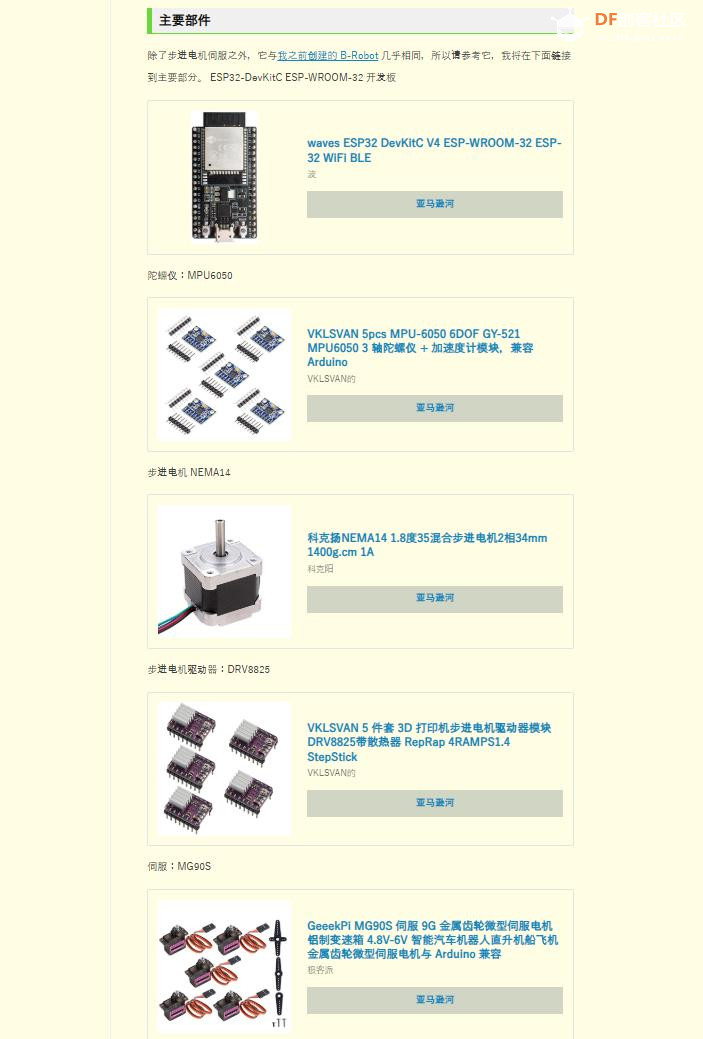
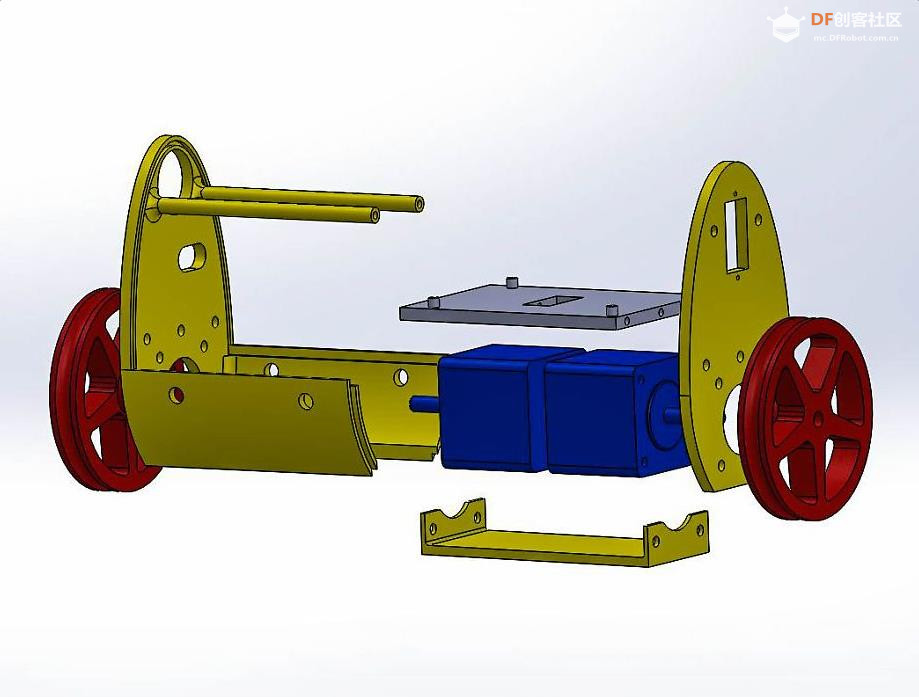
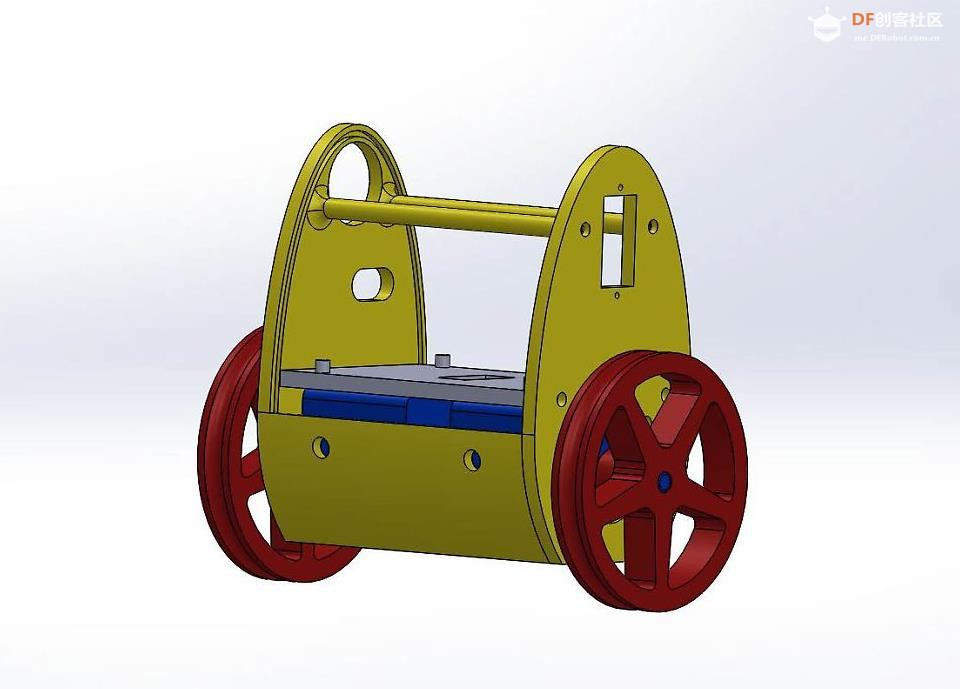
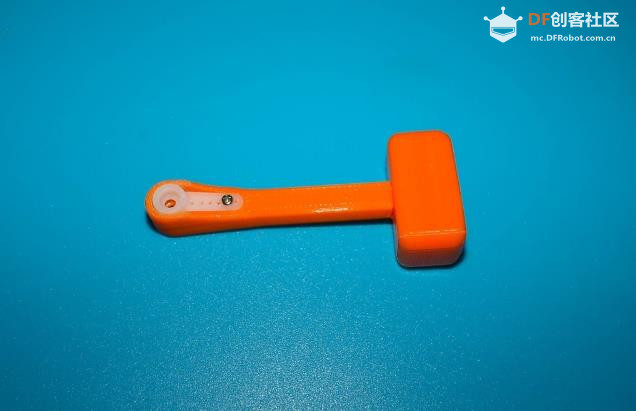
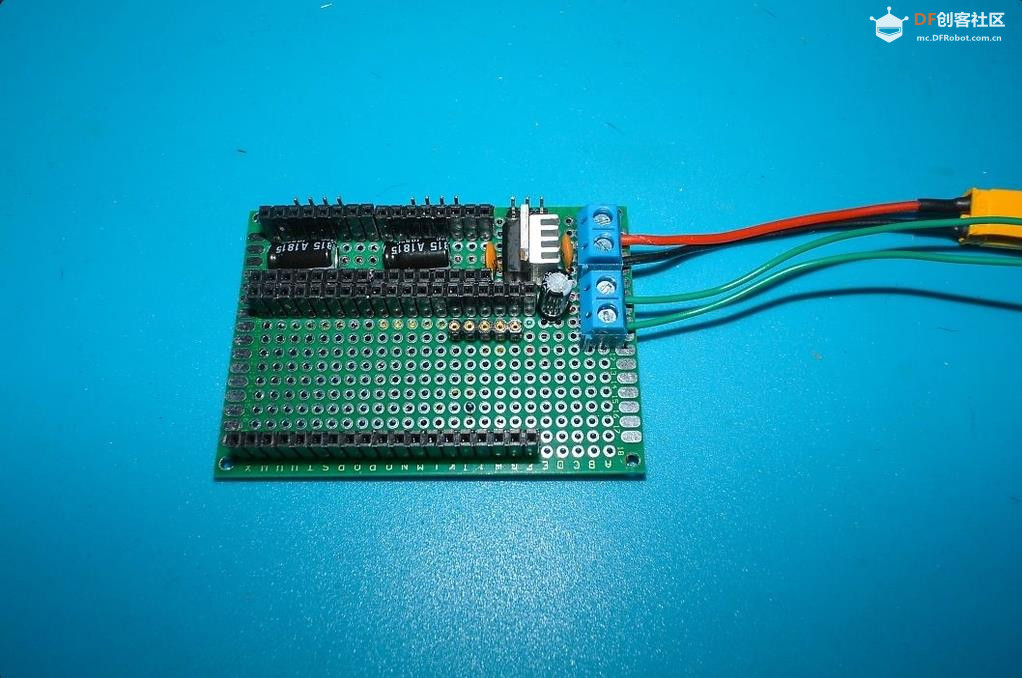
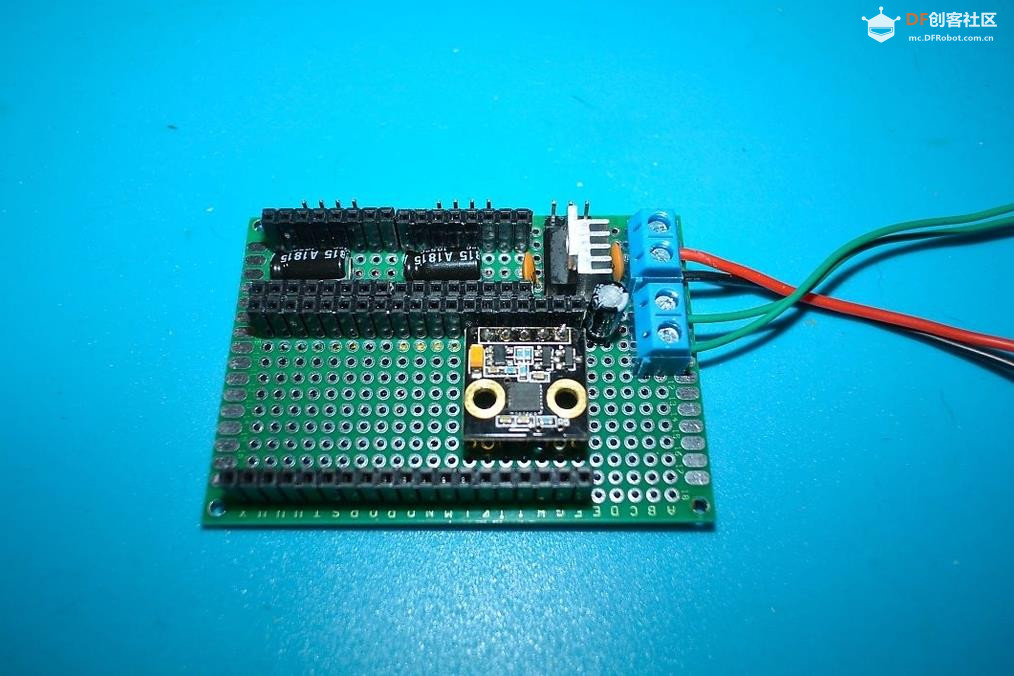
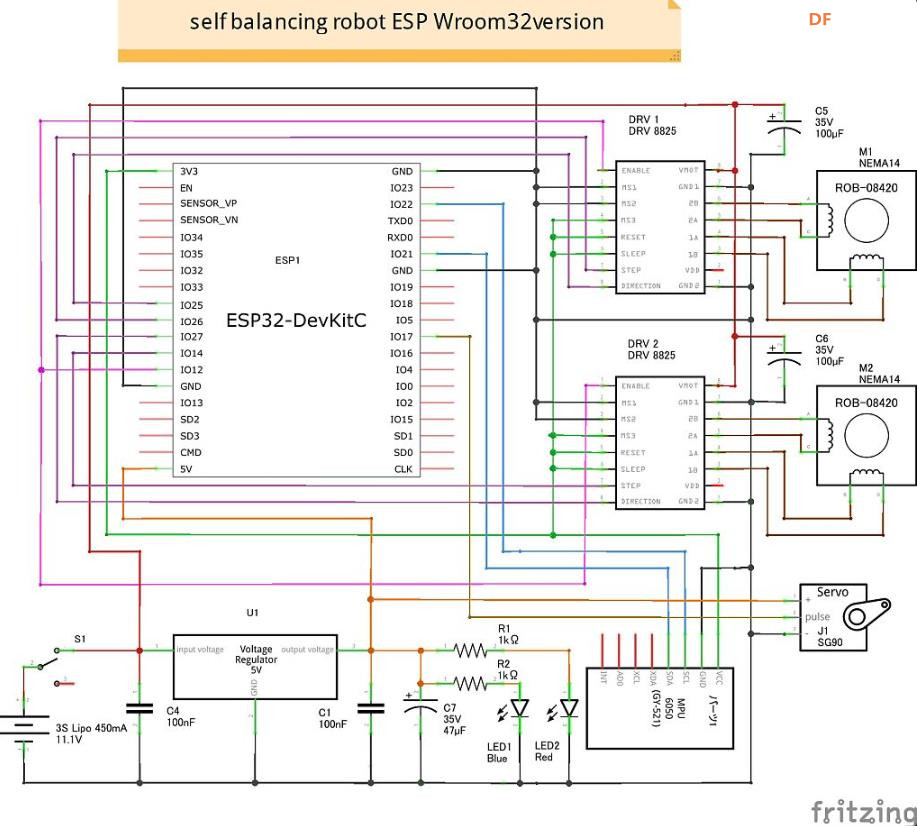
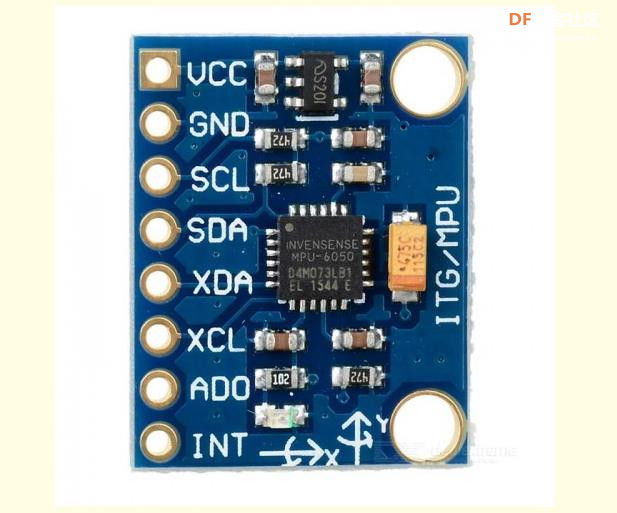
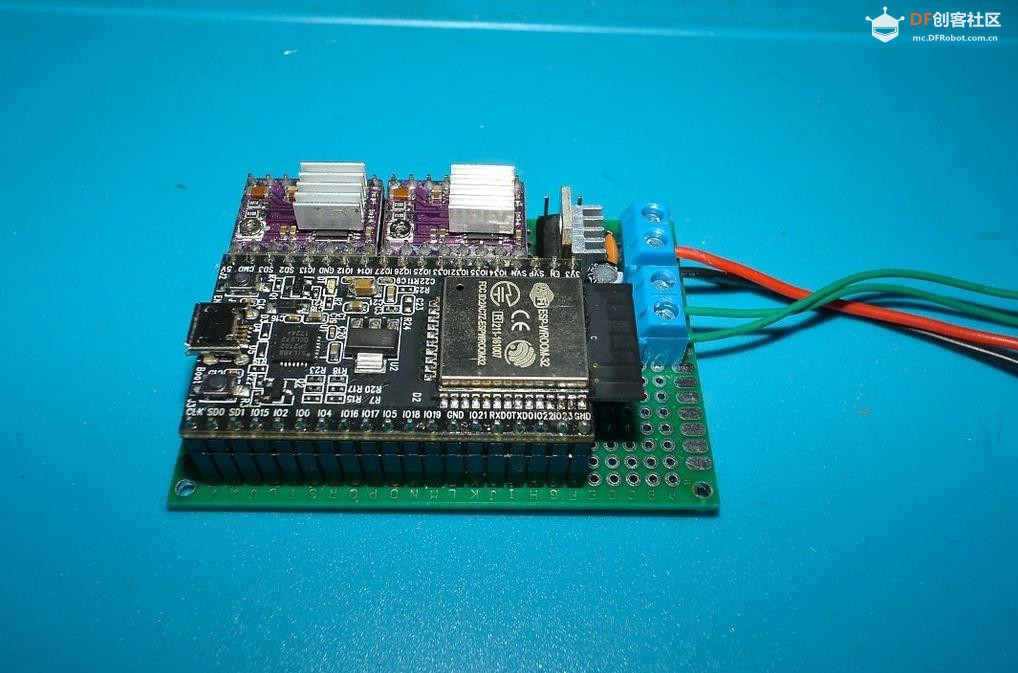
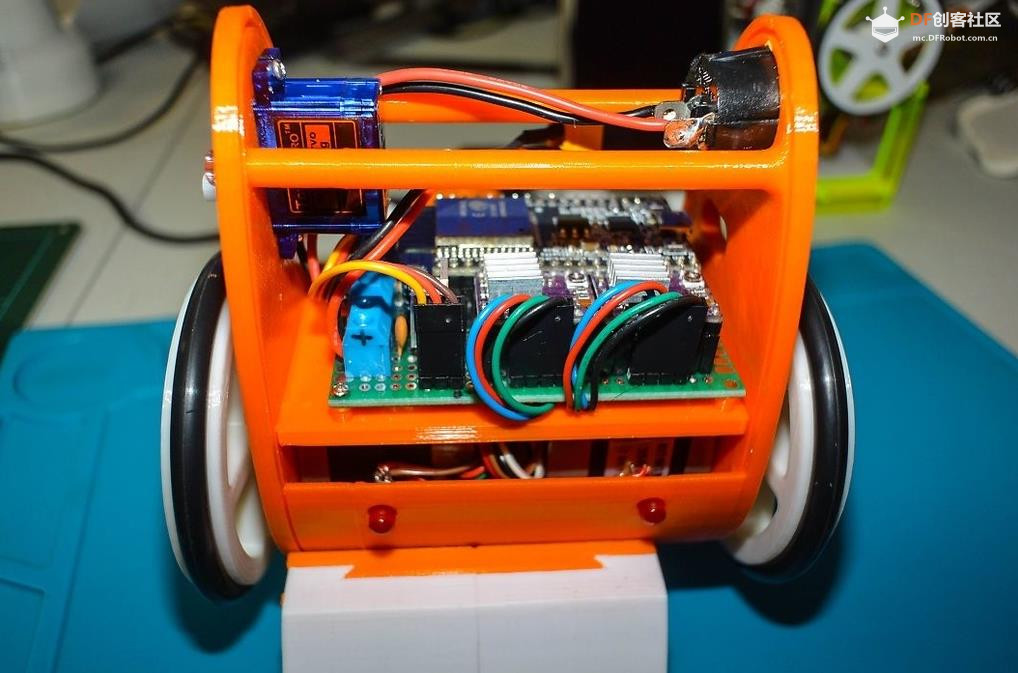
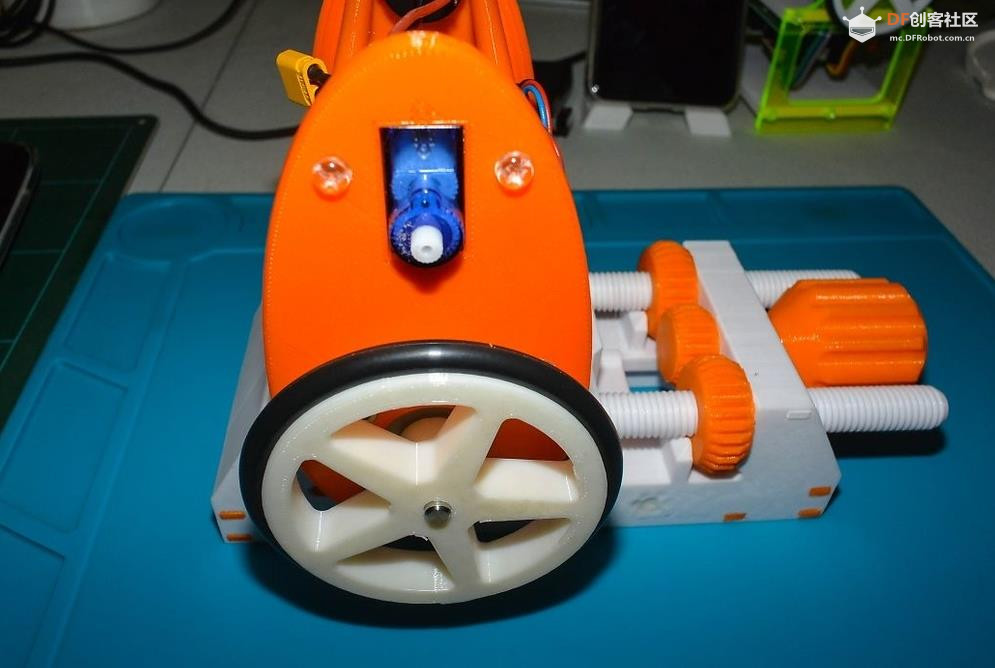
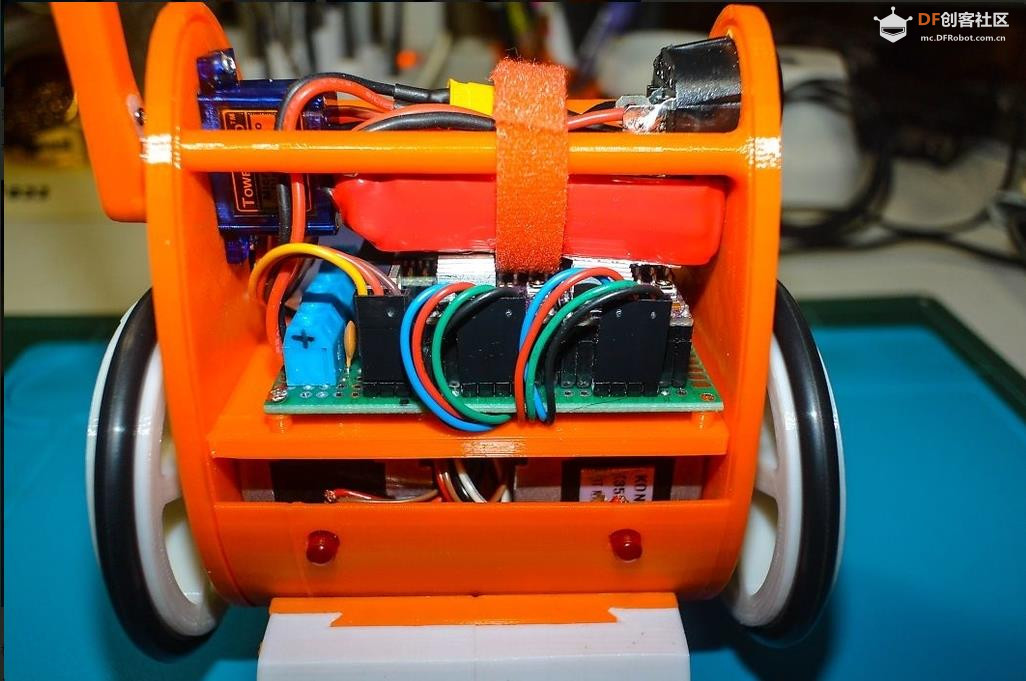
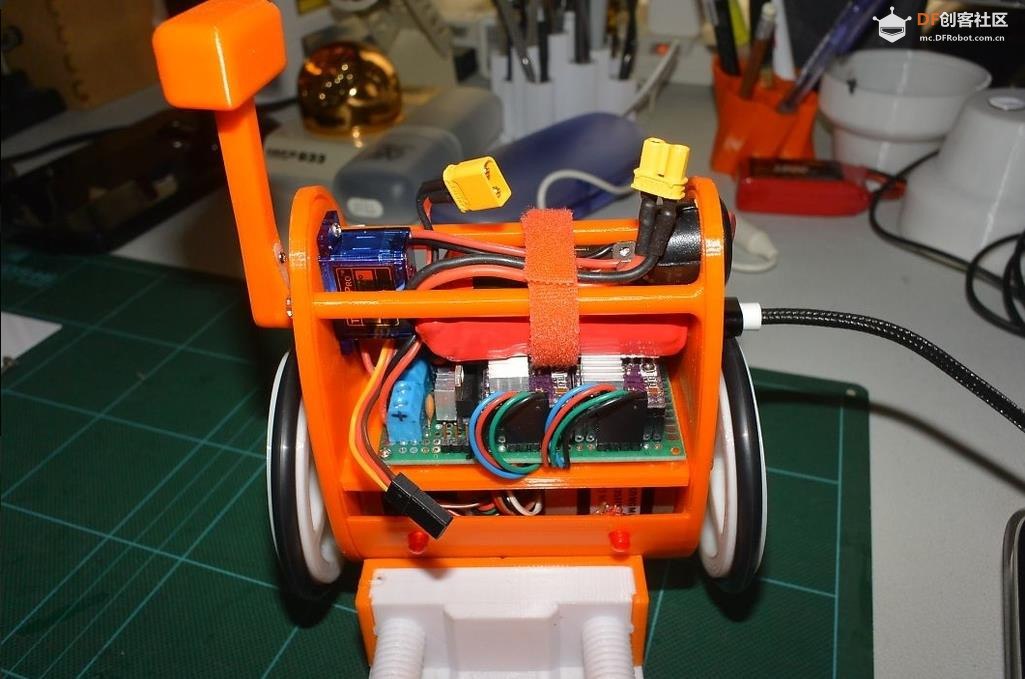

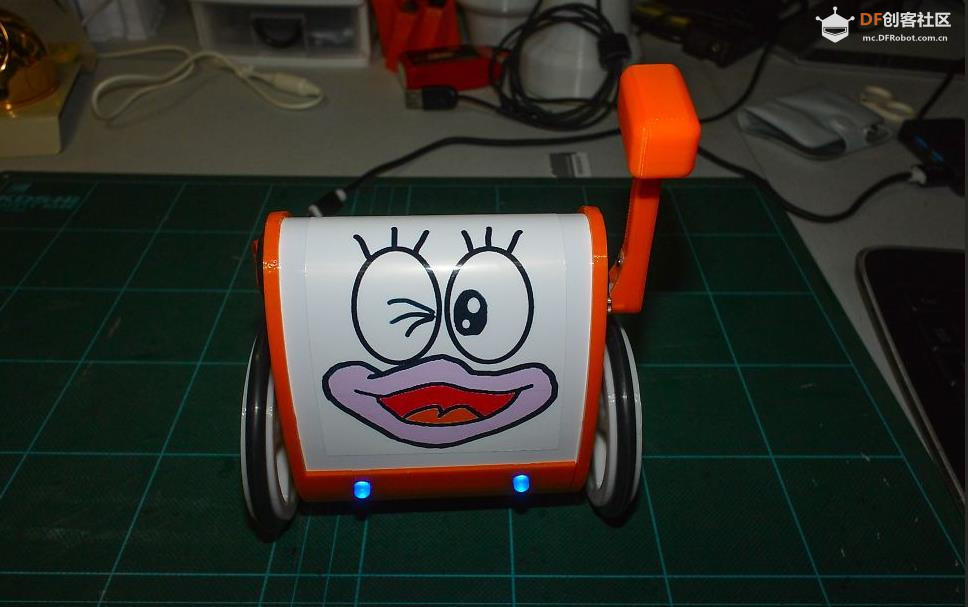
 沪公网安备31011502402448
沪公网安备31011502402448